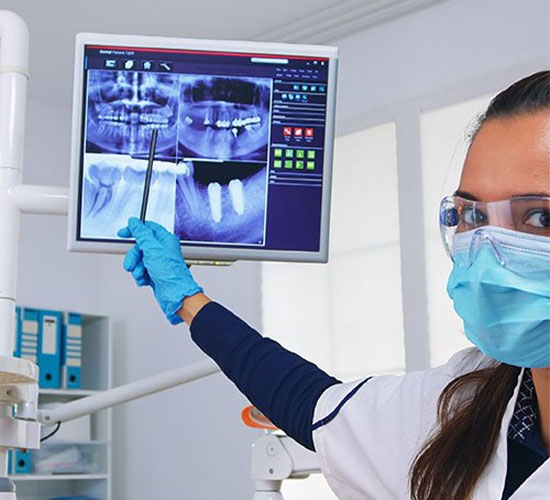Digital X-Ray:
A Modern Approach to Medical Imaging
Digital X-ray, also known as digital radiography, is a type of X-ray that uses digital sensors instead of photographic film to capture images. The images are then transferred to a computer system where they can be viewed, stored, and manipulated.
Digital X-rays offer several advantages over traditional film-based X-rays, including:
- Sharper images: Digital sensors can produce images with higher resolution and contrast than film, which can help radiologists to identify even the smallest abnormalities.
- Reduced radiation exposure: Digital X-rays use less radiation than film-based X-rays to produce images of comparable quality.
- Faster results: Digital images can be viewed and manipulated immediately, which can help to expedite diagnosis and treatment.
- Increased convenience: Digital X-ray images can be easily stored and shared electronically, which can make it easier for patients to access their medical records.

Now equipped: with latest 3rd generation Digital X-Ray technology with reduction in radiation usage by more than 60%
Digital X-rays are used to diagnose a wide range of medical conditions, including:
- Bone fractures and dislocations
- Joint problems, such as arthritis
- Infections, such as pneumonia and tuberculosis
- Lung diseases, such as asthma and emphysema
- Heart disease
- Cancer
Digital X-rays are a safe and effective way to diagnose and monitor a variety of medical conditions. They are also relatively painless and non-invasive.
Here is a step-by-step overview of how a digital X-ray is performed:
- The patient will be positioned on an X-ray table or in a standing position, depending on the area of the body being imaged.
- A radiographer will place a digital sensor on the patient’s body over the area being imaged.
- The radiographer will then step behind a shielded area and operate the X-ray machine.
- A brief burst of X-rays will be emitted from the machine and will pass through the patient’s body.
- The digital sensor will capture the X-rays and produce an image.
- The image will be displayed on a computer screen, where the radiologist can view it and interpret it.
Digital X-rays are a valuable tool for diagnosing and monitoring a variety of medical conditions. They are safe, effective, and painless.

Certified Dentist
Our certified dentists have the knowledge and experience to keep your teeth and gums healthy.

New Technology
Dentistry has come a long way over the years, with advancements in technology reshaping.

Pathology Service
When it comes to healthcare, accurate and timely diagnoses are the foundation of effective.
